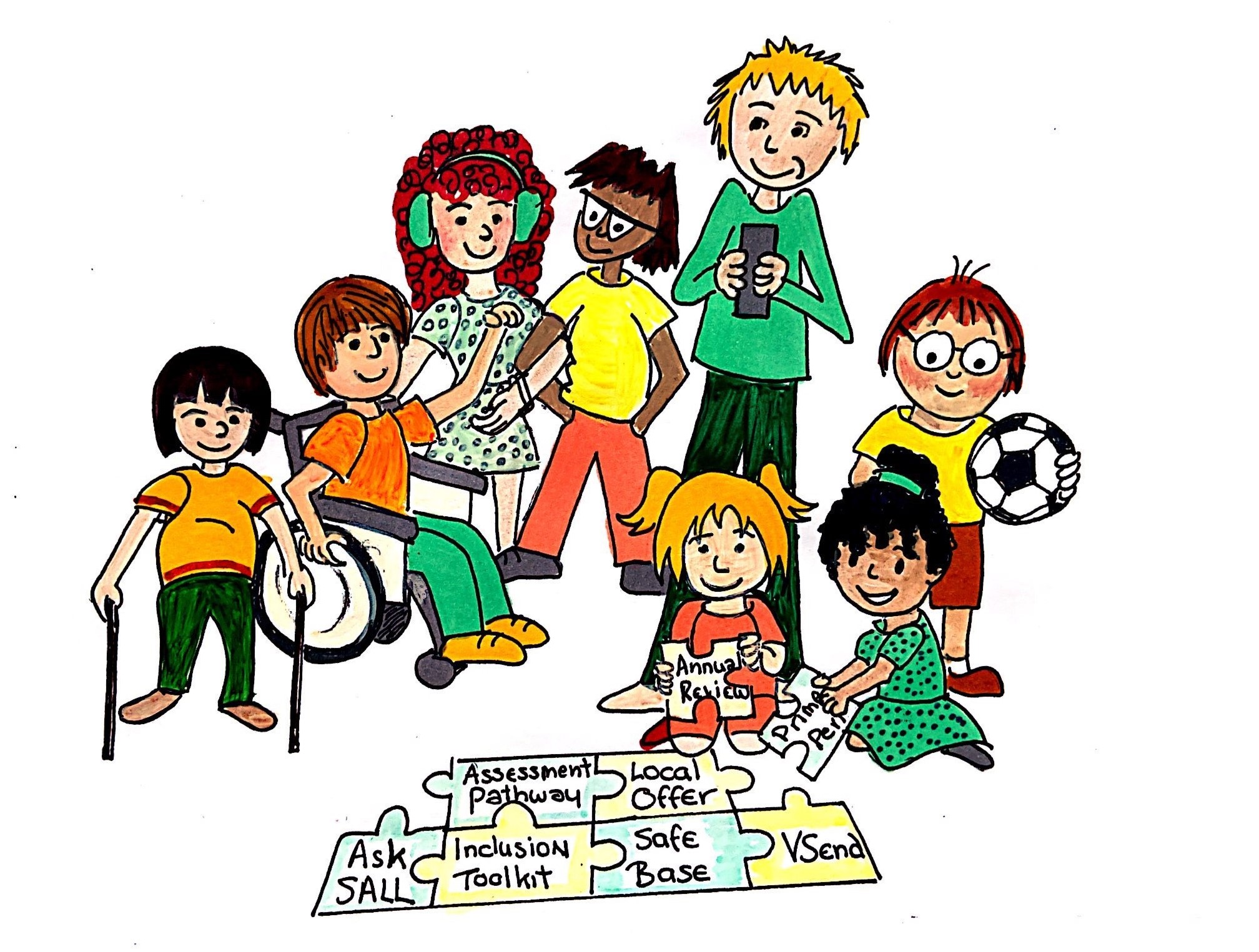Level 5-6 what you may notice
0-5
- significant physical difficulties. May have impaired mobility and or communication
- poor muscle tone or muscle strength, not stable when walking after two years old
- child has a long-term medical condition that impacts on their ability to access daily life, including on their communication, understanding or learning
- their medical needs require a significant level of therapy or medical intervention
- child has great difficulties tying shoelaces, doing up buttons and zips, using cutlery, and handwriting
- very restricted diet resulting from sensory preferences
- a diagnosed established medical condition which is controlled through regular intervention or not yet fully controlled
- medication may be required during the day
- attendance affected because of ill health or medical needs
- periods of hospitalisation required
5-16
The pupil has a moderate motor impairment (disordered motor skills) which significantly impairs their ability to participate in many aspects of school and social life and leisure activities. The pupil’s needs are met through a combination of approaches which include small group interventions and 1:1 individualised support (in and out of the classroom). The interventions, support and adaptations in place follow advice or support from NHS professionals as appropriate.
- student has severe difficulties with the ability to function independently in the school environment and in their everyday life
- physical difficulties with eating or drinking
- may require daily therapy and medical intervention to crucially avoid pressure damage and maintain joint integrity
- may show signs of fatigue during the school day, which may impact on their attendance or engagement at school
- may have a medical condition that is increasingly difficult to manage and experiencing considerable pain and disruption to their ability to focus.
- may be independently mobile, have an abnormal walking pattern, slower than peers at walking, need an aid to support walking, or may need a wheelchair for longer distances due to fatigue
- may have a chronic condition, potential degenerative condition, newly acquired condition or has special educational needs in addition to physical difficulties
- they have difficulties resulting from a medical condition in communicating, addressing self-care needs, moving independently, managing a medical condition (including self-managing when appropriate)
- may need an adapted school chair. For example, Fox Denton, Movin’ Sit cushion
- may wear splints on leg(s) or arm, hand or both
- their ongoing medical needs restricts their confidence and resilience and may result in poor attendance
Cerebral Palsy GMFCS level 2
- can climb stairs with a railing
- has difficulty with uneven surfaces inclines or in crowds
- has only minimal ability to run or jump
Cerebral Palsy GMFCS level 3
- walks with assistive mobility devices indoors and outdoors on level surfaces
- may be able to climb stairs using a railing
- may propel a manual wheelchair and need assistance for long distances or uneven surfaces
Cerebral Palsy MACS level 3 III.
- handles objects with difficulty; needs help to prepare or modify activities
- the performance is slow and achieved with limited success regarding quality and quantity
- activities are performed independently if set up or adapted
Severe Developmental Coordination Disorder (DCD)
- movement ABC -2 score <5th percentile
- significant difference between measured level of intelligence and motor performance


